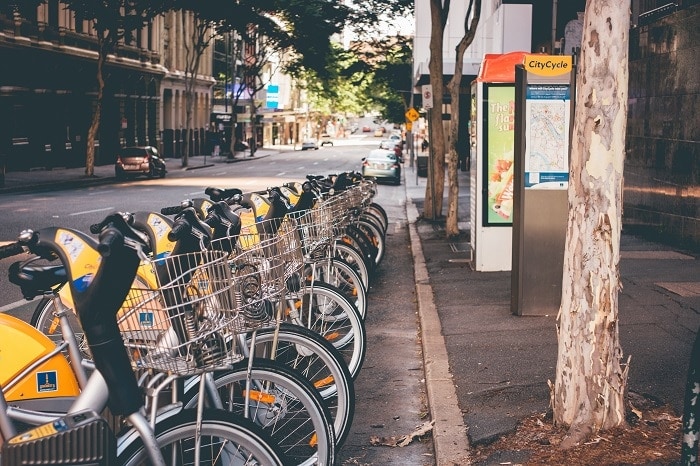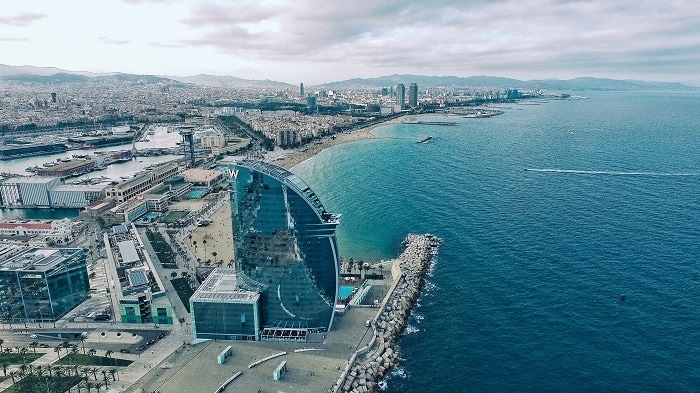
That cities are growing is undeniable. By 2050, cities are expected to be home to 70% of the world’s population. However, cities aren’t sufficiently prepared to support this population growth without investing in the necessary infrastructure or technological aspects of the city of the future. Our environment’s constant transformation and the needs we have as inhabitants involve a response from and adaptation of the cities in which we live. That adaptation has to be specific to each city’s characteristics. As demographics change, and as globalization and digitization redefine cities, their transformation is essential to promoting sustainable growth, just as commitment and a legal framework through which to carry it out are necessary, answering the expectations of residents, governments, and the private sector. Smart Cities can improve indicators such as quality of life, health, and safety by 10% to 30%, as the McKinsey Global Institute recently highlighted.
Big challenges ahead: technology, mobility, and the environment
 Source: Unsplash | Author: Zachary Staines
Source: Unsplash | Author: Zachary Staines
The study, “Smarter Cities 2025,” (launched by firms such as Accenture, Mastercard, Ferrovial, and Oracle) addresses three core elements of smart cities: technology, mobility, and the environment. In this post, we will address these pillars in this article, as well as other foundational areas that include aspects such as governance, economics, and infrastructure.
Technology: Innovation and technology are fundamental elements in the transformation of a city. Rolling out 5G, along with using artificial intelligence and big data, are basic tools for creating connected cities. With it, public service providers using technology to offer an integrated, personalized selection with a focus on higher efficiency has become a fundamental tool for fostering Smart Cities. Alongside that, the use of mobile devices has become a commodity for residents, who participate in decision-making through those devices. In all of these cases, we cannot forget the importance of data and its security.
Mobility: According to HSBC, the problems arising from urban traffic represent an annual level of approximately USD 1.7 nrt in the developed world, a figure that could go up by 30% if no solutions are found. Therefore, improving mobility in cities and reducing urban traffic by offering new models is one of the main lines of action around the world. Planning and implementing mobility strategies in sustainable transportation design is key. Developing, using, and implementing mobility platforms and multiple ride-sharing options are contributing to the change in residents’ behavior in this area. Electric vehicles, shared vehicles, bicycles, motorbikes, and scooters are transforming transportation in major cities since they are cheaper, more accessible modes of transportation than privately-owned options. Optimizing transportation routes and less traffic. Cities where getting around is not a problem but is part of the solution when shared. Given the dynamism in this arena, before long, we will have multimodal platforms with integrated mobility options that are adapted to user needs and easy payment at the click of a button.
Environment: Climate change is a reality, and action must be taken to mitigate its impact. According to the United Nations, circular economy will reduce the amount of waste produced and emissions by up to 99%. Protecting and caring for our environment is everyone’s responsibility. To this end, we must push for accessible cities that have a higher degree of circularity, where residents participate in environmental improvement and have the resources necessary to do so; where there is better access to recycling centers, less waste generation, and recovery of waste; and where cities have good-quality air and everyone pitches in to lower pollution.
Global solutions
In short, we’re facing several challenges, such as improving waste management, committing to circular economy, developing new models of transportation, lighting, connectivity, air quality indices, and cleaner cities, all of which need a solution. It is no longer just about having a city where we can live with certain services, but instead a safe environment that citizens enjoy, are proud of, and are happier in. Solutions for addressing major cities in taking on some of these challenges include:
- Planning and designing a long-term roadmap.
- Prioritizing needs and adapting them to each city’s logic.
- Designing participatory processes that integrate collaboration and agreement between different social agents.
- Coordinating to create a legal framework where new urban planning, applying the latest technologies, and integrating change into the behavior of residents and their preferences are facilitated or adapted.
- The technology and capacity for project development and understanding residents and dealing with the large influx of people who will use limited space and infrastructure capacity.
- Security and privacy for information.
Major cities making a difference
- London: According to the latest IESE Smart Cities Index published in 2019, this British city ranks first in the organization’s annual list of smart cities. This is due to the continual improvement the city has made in regards such as mobility, transportation, urban planning technology, and the London has launched initiatives such as “Sharing Cities,” a program for different countries to share the use of new technologies to improve citizens’ lives, and the Londoners Lab, which focuses on increasing recycling among citizens, who clearly make a difference.
- Amsterdam: the Dutch city is another a clear instance of where projects are being carried out as a “Smart City,” such as creating municipalities whose urban management is based on energy efficiency, or initiatives on mobile apps for managing traffic and parking in the city. Its entire strategy is summed up in the Amsterdam Smart City platform, which brings together initiatives for improving sustainability and citizens’ quality of life.
- Barcelona: this city is another national and international leader when it comes to smart cities. A study published by the University of Glasgow ranked Barcelona as the third city in the world – behind only London and Singapore – with the most initiatives related to this area. There are multiple projects driven by this city, such as Barcelona Digital, 5G, the Open Data area, and a commitment to sustainable transportation, thanks to the new city’s new bike system.
 Source: Unsplash | Author: Benjamin Gremler
Source: Unsplash | Author: Benjamin Gremler
International organizations that are promoting more sustainable cities
The search for solutions to the challenges identified is supported by international initiatives such as the United Nations 2030 Agenda and its Sustainable Development Goal 11 on “Sustainable Cities and Communities”: the European Union’s 20-20-20 treaty, ISO 37100, Sustainable Cities and Communities, where the EU has a Strategic Plan to move towards energy and climate goals. Also of interest are the “Horizon 2020” and “Life” programs, as well as the Spanish National Plan for Smart Cities.
To meet all of these challenges, greater program development, public support for innovation, and a more ambitious long-term vision are all imperative. Both through initiatives driven by areas of Innovation and sustainability from local entities that, along with innovative proposals from the private sector (companies, SMEs, start-ups) are firmly committed, as well as bids that increasingly demand new forms of innovative, sustainable services, there’s one thing we’re sure of: living in smart cities is possible, but we all have to play our part in it.





There are no comments yet